
March Garden Guide
Note: This is general information for the entire state of Arkansas on what to plant in your garden in March. For specific questions about planting in your area, please reach out to your local county agent.
March is finally here! We are officially going from winter to spring. As there is still the danger of freezing temperatures, use caution when planting your plants this month. Be sure to keep some protective coverings handy and watch the radar.
Garden Chores for March
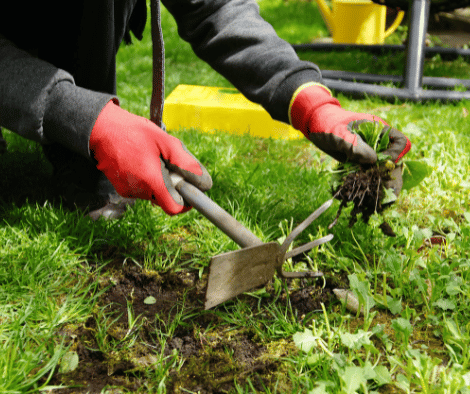
Last month we started our winter pruning process, but if you are late to the game, don't worry! There is still some time to finish pruning your summer blooming plants this month.
Now is also a good time to plant trees, such as woody landscape trees and fruit trees, as well as shrubs in your yard. See what else we recommend doing in your garden this month:
- Clean up beds by removing all weeds and dead foliage.
- Finish your pruning by mid-March.
- Cautiously loosen winter mulch from perennials.
- Fertilize your soil.
- Divide fall-blooming plants.
- Check fruit trees for spring webworm egg masses and remove them.
- Avoid moving houseplants outside until late April.
- Trim your ornamental grasses before new growth begins and divide, if needed.
Tips for Spring Gardening
Still deciding where to put your garden beds? Run your garden beds east-west to allow the most sun exposure to all your plants. Be sure when deciding where to plant your vegetables and flowers that you plant the things that are supposed to grow the tallest on the north side of your bed to avoid overshadowing the shorter plants.
Do you have a deer problem? Consider planting deer-resistant plants.
Avoid planting in wet soil, as wet soil encourages root-rot and disease. Plant on a day when it hasn't rained in a few days and the forecast is predicting little precipitation in the following days.
Fertilize your garden soil based on the results of your last soil test. If your soil was not tested, apply one pound of 10-10-10 fertilizer per 100 square foot area. Need some help understanding the numbers on your soil test? We have the answers!
Still Haven't Pruned Your Summer-Blooming Plants?
You still have some time to prune your summer bloomers like fruit trees, grapevines, blueberry bushes, crapemyrtles, buddleias, and summer-blooming spireas.
Peaches can be pruned while blooming, just be careful not to knock off any of the blooms.
Prune spring-blooming plants after they bloom. Once the flowers are spent, you can prune ⅓ of the old canes from cane-producing spring-flowering shrubs, such as flowering quince and forsythia.
Did You Buy Bareroot Plants?
When buying dormant, bareroot plants (the ones that usually come in the plastic sleeves) they must be planted while they are still dormant. Unwrap these plants as soon as possible after you get them home and store them in a cool, protected spot until conditions are right for planting outside. Make sure to keep the soil moist.
March Vegetable Planting Guide
February and March are such exciting months for gardeners because we can really start digging into our gardens! No pun intended. Check out the vegetables we recommend planting this month below:
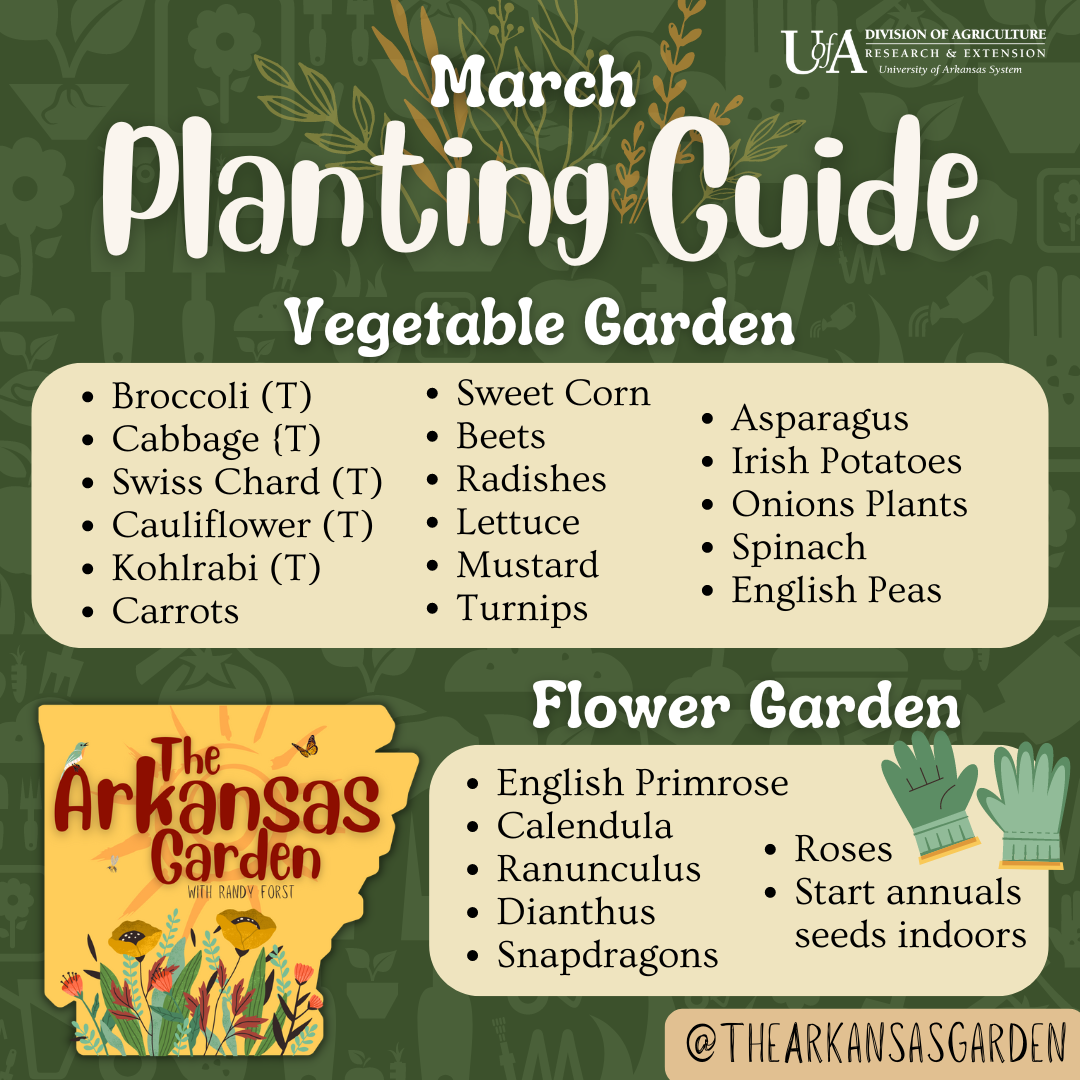
- Broccoli Transplants
- Cabbage Transplants
- Swiss Chard Transplants
- Cauliflower Transplants
- Kohlrabi Transplants
- Carrots
- Sweet Corn
- Beets
- Radishes
- Lettuce
- Mustard
- Turnips
- Asparagus
- Irish Potatoes
- Onions Plants
- Spinach
- English Peas
There's Time for a Cool-Season Crop!
You can plant your cool-season vegetables now. Start peas, beets, carrots, radishes, kale, chard, leaf lettuces, spinach, and other greens from seed directly into your bed or container. You will also want to set out your cabbage, broccoli, cauliflower transplants as well as your onion plants and onion transplants.
What does it mean to "set out" your transplants? Setting out your transplants means to take them from indoors (inside your house or greenhouse) and allow them to slowly acclimate to the temperature and conditions outside. This allows them to harden off and get stronger before planting them. Set them out for a few hours a day for a week before planting them in the garden. Try to do this on a shady day in the late afternoon or early evening to minimize the transplant shock.
Start Warm-Season Veggies Indoors
Now is the time to start your warm-season vegetables indoors from seed. These vegetables include, but are not limited to: tomatoes, peppers, and eggplants. Avoid planting tender vegetables outdoors until mid- to late-April when the danger of frost has passed.
Asparagus Gardening Tips
Don't have an asparagus garden? Give it a shot! Start you asparagus garden now, and in three years, you will be ready for your first harvest.
One-year-old asparagus crowns should be available at most nurseries and garden centers. To plant asparagus, you can dig a trench and spread out your crowns and cover them lightly with soil. As they grow taller, you will need to add more soil until the trench is filled back up completely.
When asparagus is in season, you will need to harvest about every other day to prevent your spears from growing too large. Stop harvesting with the spears are smaller than a pencil in diameter.
March Flower Planting Guide
In need of some quick color this month? You can plant some short-season color plants (English primrose, calendula, etc.). Find out what all flowers we recommend planting this month:
- English Primrose
- Calendula
- Ranunculus
- Dianthus
- Snapdragons
- Roses (bareroot and container grown)
- Start annuals seeds indoors in mid-March
A tip on azaleas: If you want a specific color of azalea, wait to buy it in bloom so you will know what color you're getting.
Spring-Blooming Bulb Care in the Spring
Give your spring bulbs at least 6 weeks before mowing or cutting back the foliage. They will need this time to establish healthy growth for next year. Bulbs like daffodils and crocuses will usually come back each year, while tulips should be replanted every year for the healthiest and most successful blooms.
Dig, Divide and Distribute!
Are your fall-blooming perennials getting a little too crowded? Take some time this month to dig and divide hostas, chrysanthemums, sedums, ornamental grasses, shasta daisies, black-eyed susans, daylilies, asters, and garden phlox, to name a few!
👍 A good rule of thumb is to divide spring-blooming plants in the fall and divide fall-blooming plants in the spring.
Be sure to share your loot with your friends, family, neighbors, and co-workers! Sharing is caring ❤️
Pruning Hybrid Tea Roses
Hybrid tea roses need to be pruned in late February to early March. To prune, remember to cut ¼ inch above an outward-facing bud at a 45° angle. Seal the cut wound with a sealer to prevent disease and insects.
In Bloom in March
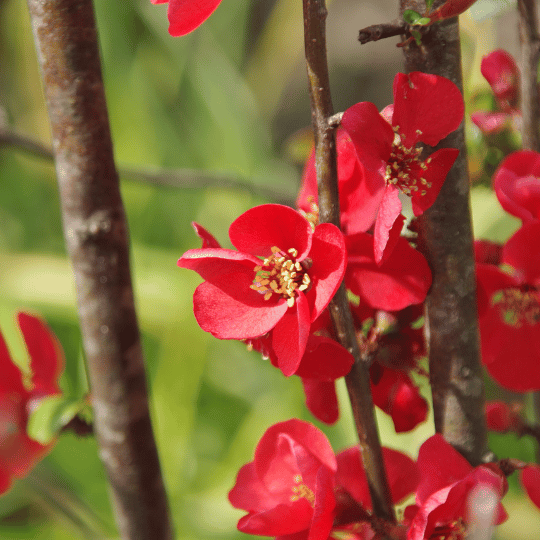
Flowering Quince
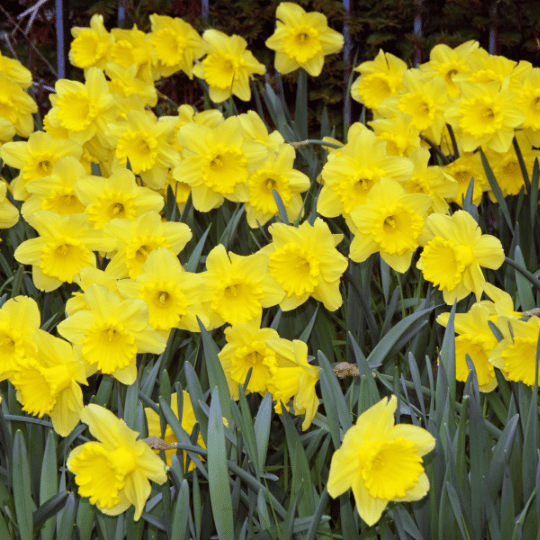
Daffodil
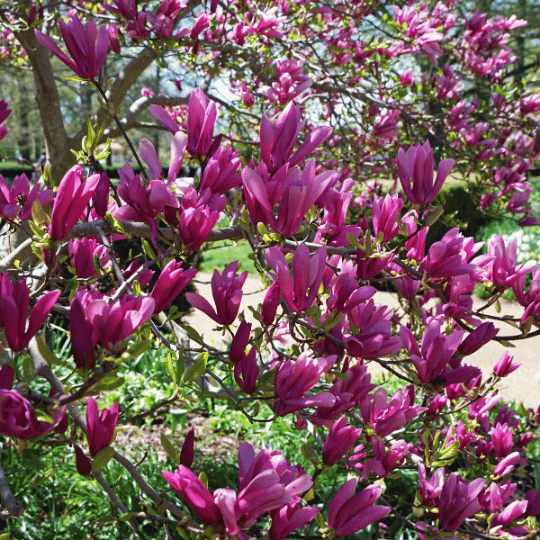
Saucer Magnolia
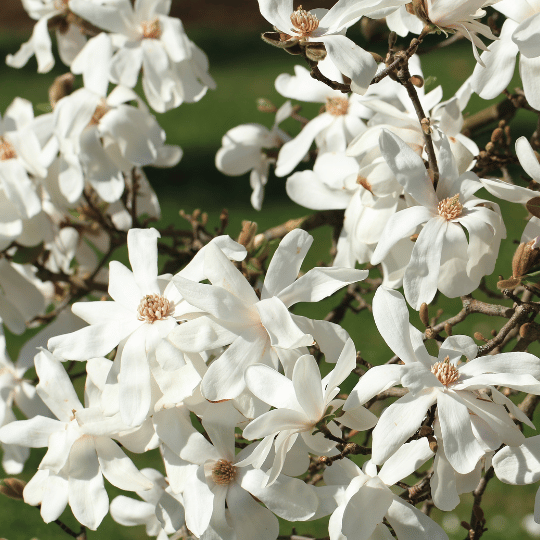
Star Magnolia
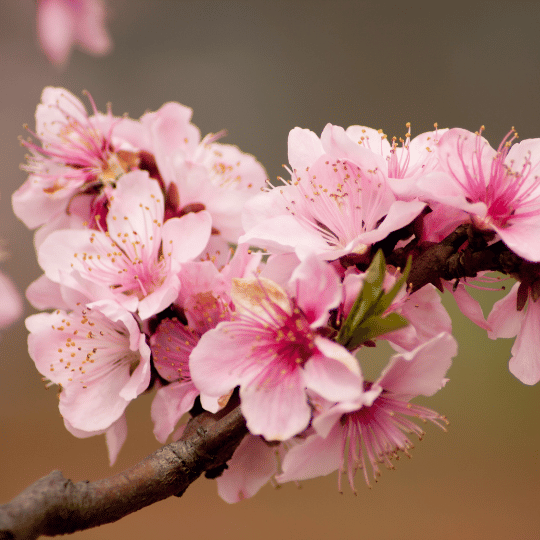
Peach Blossom

Tulip
January | February | March | April | May | June
July | August | September | October | November | December

